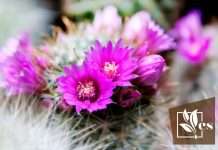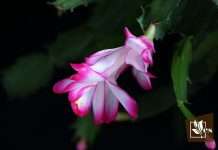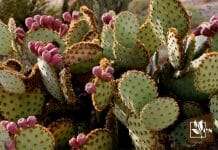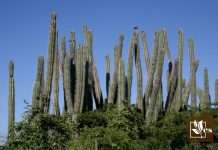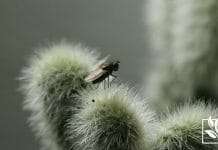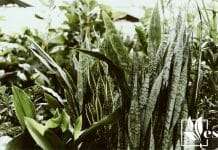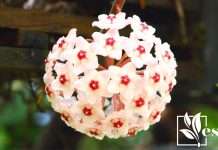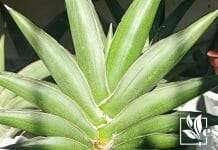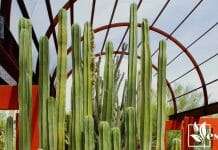- 6 Cactus Plants With Pink Flowers: Stunning & Little Effort - March 28, 2024
- 6 Alternative To String Trimmer: Useful Common Options - March 28, 2024
- Oil Coming Out of Lawn Mower Exhaust? Reasons and Fixes - March 28, 2024
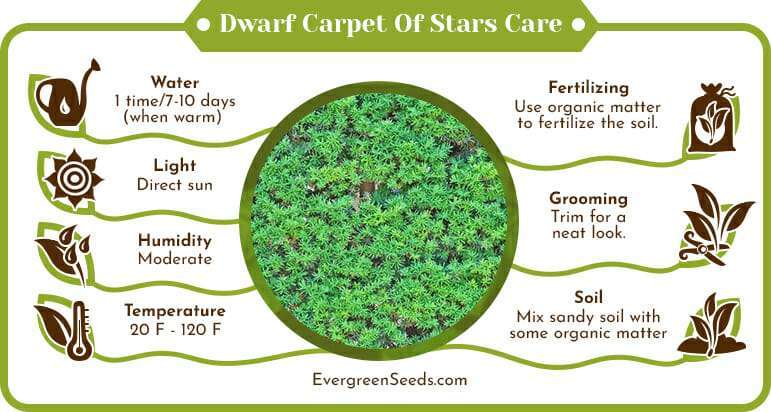
The dwarf carpet of stars of the Aizoaceae family is a succulent that has thick and fleshy leaves. This plant is evergreen, which means that it maintains its gorgeous green color all year round and this makes it a perfect substitute for grass.
The dwarf carpet of stars forms a wonderful natural carpet that maintains its height between one and two inches. Let us get into the details of the best ideas for growing this Ruschia genus beauty.
JUMP TO TOPIC
What Is Dwarf Carpet of Stars?
The dwarf carpet of stars is a drought-resistant natural ground cover or carpet-forming type of flora that produces small pink or purple flowers, with white stripes during spring. It is also known as Ruschia lineolata ‘Nana,’ and has red stems with three to eight-inch three angled leaves.
Dwarf Carpet of Stars Care
The dwarf carpet of stars plant is perfect for beginners since it does not require much attention. It is a drought-tolerant plant and this makes it an easy-to-care-for plant. The dwarf carpet of stars resists pressure through its tough and resilient nature.
 Water Requirements
Water Requirements
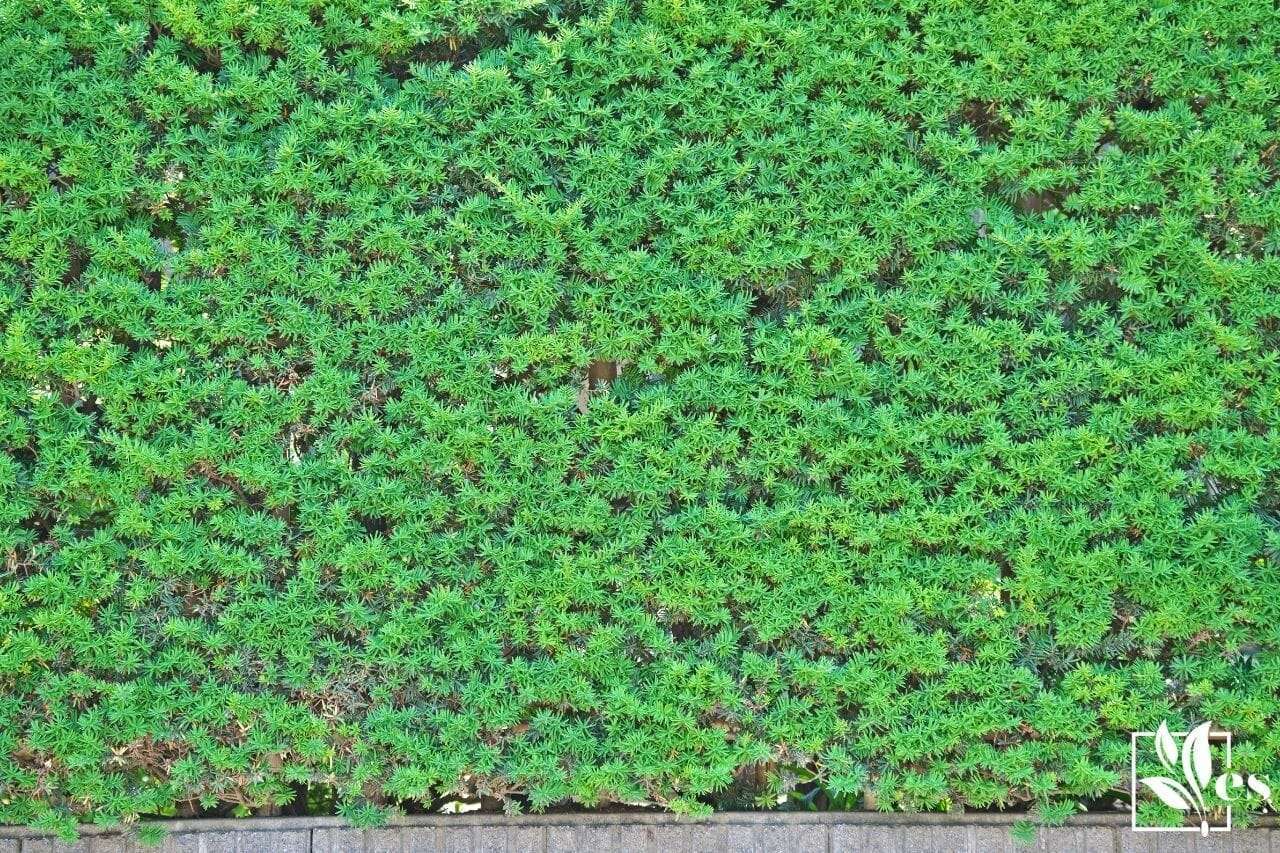 In your plant’s early stages, apply a lot of water to the dwarf carpet of stars to aid its establishment. After this stage, you can water your plant after every seven to 10 days but you need to check the temperature level first.
In your plant’s early stages, apply a lot of water to the dwarf carpet of stars to aid its establishment. After this stage, you can water your plant after every seven to 10 days but you need to check the temperature level first.
When the temperatures are low, cut back on watering and when the temperatures are high, water the plant frequently.
Remember this plant belongs to the succulent family, which means we don’t recommend overwatering it. When it is overwatered, the plant starts turning yellow, thereby drawing away from the chlorophyll which is vital for sunlight absorption. When you notice that your plant is turning yellow, stop watering for a while and you will notice the leaves going back to their natural color.
The soil type that your plants are growing on also determines the frequency of watering. Different soil types have varying water holding or drainage qualities so you have to be very careful in order to maintain your dwarf carpet of stars’ well-being.
When your plant is underwatered, its leaves turn light green and develop some gray shades. To avert these symptoms, provide more water to the plant.
 Light Requirements
Light Requirements
The dwarf carpet of stars thrives in direct sunlight and partly shaded areas. This plant can withstand the sun’s rays with its tough succulent leaves. We recommend that you plant Ruschia ‘Nana’ at a place where it gets at least six hours of direct sunlight.
Nonetheless, it also does well in shaded areas which allow light to come through, thereby making it a great option for both indoors and outdoors.
Exposing the dwarf carpet of stars to adequate light aids its development and blooming, considering that it will be able to produce enough food.
When the temperatures are too high, this does not necessarily mean that you have to increase watering it since the plant is drought tolerant. However, do not let the soil dry up for long since prolonged dryness has adverse effects on your plant.
 Temperature Requirements
Temperature Requirements
The temperature range for this amazing plant’s growth is relatively wide. This makes it even easier for you to maintain it just by ensuring that the temperature range is between 20 to 120 degrees Fahrenheit.
Such extreme temperatures prove that the dwarf carpet on stars is indeed hardy and resilient. The temperatures that we recommended allow you to grow it throughout the seasons and in different climatic conditions.
The bright and hot summer temperatures are best for this plant. Given that the temperatures are too high, the plant loses more water through transpiration so consider applying more water to replenish it.
When the temperature is too low, cut back on watering since water loss through transpiration is low. The relationship between temperature and watering is very important so, always try to strike a balance.
 Humidity Requirements
Humidity Requirements
The dwarf carpet of stars tolerates a wide range of humidity levels. Such tolerance enables it to survive through different seasons in the year. However, the humidity must not be too high. When the temperature is high, too much humidity makes the Ruschia ‘Nana’ more vulnerable to pests and diseases.
Higher levels of relative humidity cause the plant to reduce or stop transpiration, as well as water and nutrient uptake. However, these conditions improve photosynthesis since the plant’s stoma will be wide open and no water is lost due to saturated surrounding air.
Remember that prolonged exposure to such conditions will expose your plant to rots. However, relatively low humidity in warm temperatures increases the rate of transpiration, which in turn improves water and nutrient uptake.
 Soil Requirements
Soil Requirements
The Ruschia lineolata ‘Nana’ does well when it’s planted in fertile soil although it can also grow in various soil types. Make sure that the ground is pest and disease-free before planting. The soil pH should be more or less neutral for best plant development. Bear in mind that waterlogged soil is bad for succulents as it exposes them to root rot.
Ruschia ‘Nana’ is an ice plant that needs a well-draining type of soil that does away with excess water. Well-draining soils are characterized by a good gravel composition since it is very permeable.
In this case, consider growing the dwarf carpet of stars on sandy soils. However, sandy soils lack enough organic matter needed for feeding the plant.
We, therefore, advise that you mix the sandy soil with some organic matter, which also helps to hold some moisture and nutrients for your plant.
Given that the clay content in the soil is high, you need to plow or harrow it so that the top three or four inches loosen up. This allows the roots to grow through the soil easily and improves the drainage attributes of the soil.
Ensure that you remove the grass that previously grew on the land together with the roots because other types of grass, like Kikuyu and Bermuda, have root networks that are dense, making the dwarf carpet of stars’ survival quite impossible.
 Fertilizer Requirements
Fertilizer Requirements
The dwarf carpet of stars grows well in nutrified soils so it is advisable to use organic matter to fertilize the soil. Consider applying a fertilizer that contains phosphorus, nitrogen, and potassium a month after planting.
These fertilizer components are best for root and leaf development. Avoid over-fertilizing the Ruschia ‘nana’ as it may result in distorted plant development and even death.
Due to its carpet-forming nature, it becomes very difficult to fertilize the dwarf carpet of stars when it has fully developed.
However, when the need arises, use organic fertilizers to enrich the soil. Prioritize fertilizing in early spring using a balanced 15-15-15 fertilizer. This plant survives well during winter although the growth rate is low.
 Pruning
Pruning
The dwarf carpet of stars’ low-growing nature makes mowing and pruning unnecessary. However, you may find it necessary to trim the plants when they grow beyond borders, between pavers, and in other situations that you may come across. Always use sterilized tools when trimming this plant to prevent bacterial, fungal, or viral infections, to avoid any problems.
As highlighted earlier, this plant is quite carefree and beginner-friendly. Unlike other ground covers, the Ruschia ‘nana’s height remains well under two inches, thereby saving your time and energy in mowing it. However, you can remove any bad or damaged parts of this plant to maintain its gorgeous appearance.
Propagation
You can propagate the dwarf carpet of stars using cutting or seed methods. Please note that in both methods, you can use a dwarf carpet of stars plugs, which you can water thoroughly, prior to planting them about six inches apart from each other.
– Propagation by Cuttings
In this method, cut off healthy stems from the plant and leave them for three to four days to callous. Ensure that your cutting utensils are clean to avoid passing on bacteria to the plant. We advise that you consider mature cuttings with a few leaves for propagation.
Prepare a cactus mix and plant the cuttings, leaving the upper half above the soil level. Water the cuttings daily and it will take about a month for them to develop roots.
Once the roots appear, transfer the cuttings to the ground you need them to grow. Make sure that the ground has good drainage qualities to curb problems like root rot and other overwatering effects.
Furthermore, ensure that the soil is well aired and well-fertilized before planting. After planting, water the Ruschia ‘Nana’ daily until it is established. Well-established plants have to be watered once in seven to 10 days.
Optimum season planting requires three to five months to fill up the ground, whereas dwarf carpet of stars plugs planted at the end of fall and winter takes five to seven months.
– Propagation by Seeds
This wonderful plant can also be propagated using seeds. You can collect your seeds from mature plants or buy them from recommended and reputable suppliers.
The dwarf carpet of stars’ seeds grows in pods so be sure to allow them to grow mature and dry up. The next step is to collect the dry pods, break them open, and take out the seeds.
Remove the chaff by cleaning the seeds with clean water and dry them under the sun for a day or two. Now, plant the seeds in well-draining soil in any season and water the soil daily until they germinate.
Also, make sure that the soil is well-fertilized and well-aired. The growth rate of the young plants will be slow during winter and will improve in the spring and summer seasons.
Given that you wish to sow your seeds during winter, consider putting them in invented containers or unheated greenhouses. These conditions aid effective germination and growth.
When propagating during spring or summer, you can sow the seeds directly into the place or ground you want the plants to cover. The dwarf carpet of stars’ seeds is tiny and can be germinated on damp paper towels.
Problems
The Ruschia ‘nana’ plant is quite disease-resistant and this gives it dominion over common grass. However, some issues like improper watering expose this plant to foliage problems.
– Yellowing of Foliage
When the dwarf carpet of stars has been overwatered, its foliage turns yellow. When you notice the leaves turning yellow, stop watering until the plant recovers.
You have to ensure that the soil has adequate drainage qualities before planting the dwarf carpet of stars so that you do away with excess water. If prolonged excess water conditions are not dealt with on time, stunted growth and plant death may result.
Keep in mind that you introduce this plant to your places to add a pizzazz touch to your outdoors so try to strike a balance between watering frequency and the soil’s drainage qualities.
– Bronze Color on Leaf Tips
When you underwater your plant, a bronze color appears on the tips of its leaves. The entire leaf color may also become lighter if the Ruschia ‘nana’ is underwatered.
Check the soil and if you notice dryness, water more frequently to replenish the lost water. Also, make sure that the soil is well-aired and loose to allow the roots to penetrate and grow freely.
The other cause of bronze leaf tips is that the soil may be under-fertilized. Nutrient deficient dwarf carpet of stars will lose its beautiful green leaf color and you need to supplement it with a 15-15-15 N-P-K fertilizer.
Given that the water requirements are well met, fertilizing the Ruschia ‘Nana’ helps it to regain its gorgeousness. This type of fertilizer also empowers the plant to thrive through winter without any difficulties.
– Weeds
The Ruschia ‘Nana’s growth and beauty can be disturbed by the growth of weeds. Weeds disrupt the growth patterns of this plant by competing for available nutrients since some of them are heavy feeders.
It is advisable to remove all weeds which formally occupy the ground you intend to plant on including their roots. Given that the weeds appear after planting, remove them before they multiply further. You can remove them with a string trimmer or some other alternative.
The dwarf carpet of stars’ carpet form reduces weed germination. It helps to maintain the beauty of the landscape by preventing weeds.


